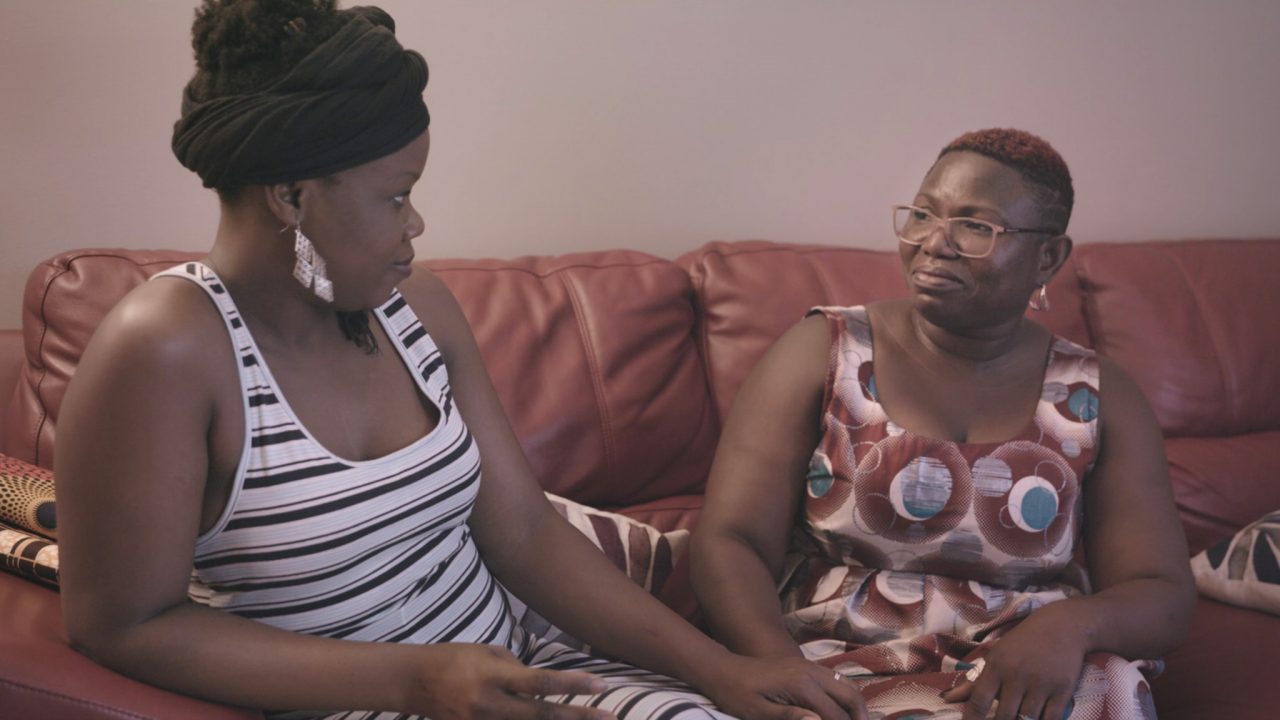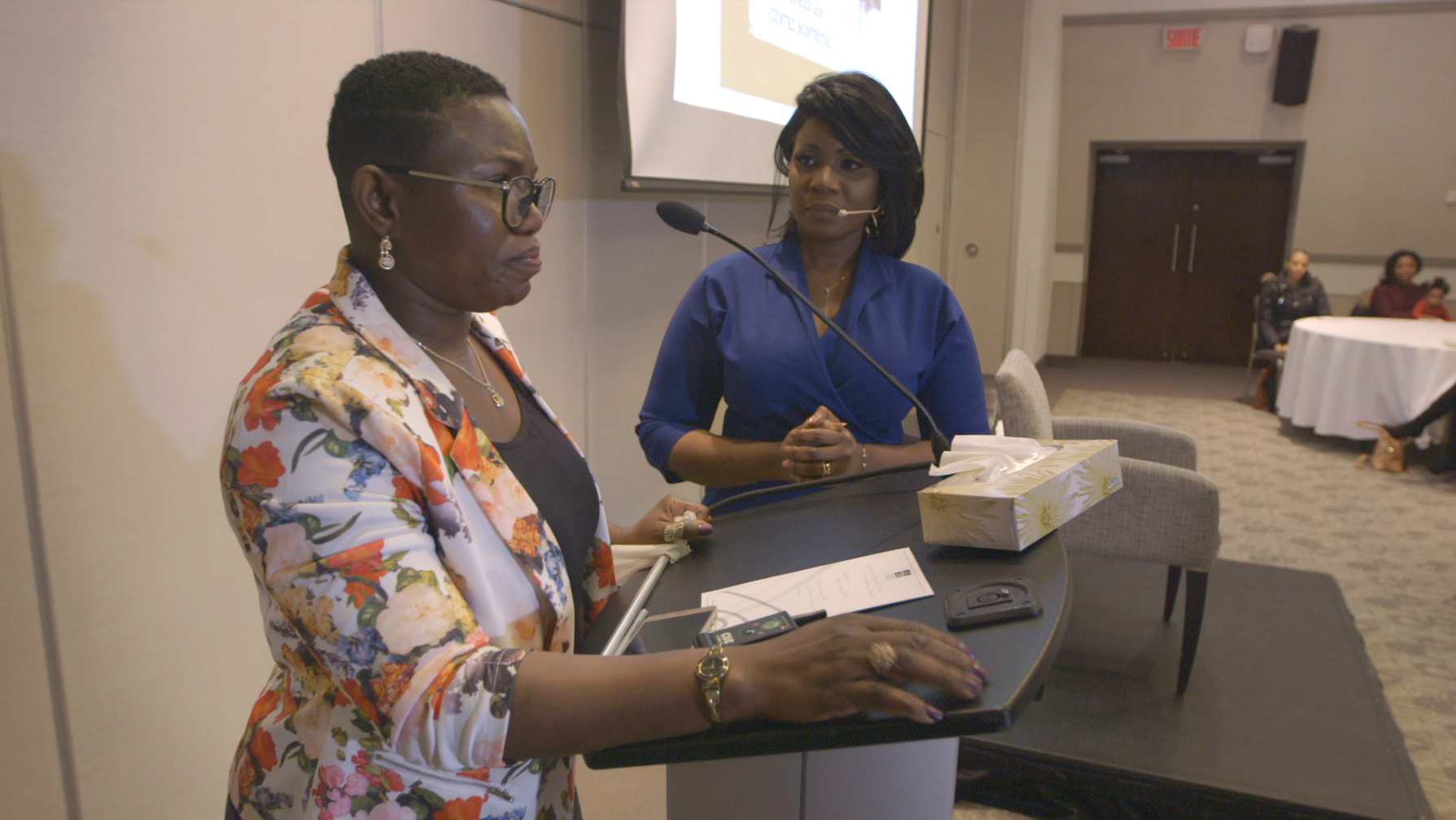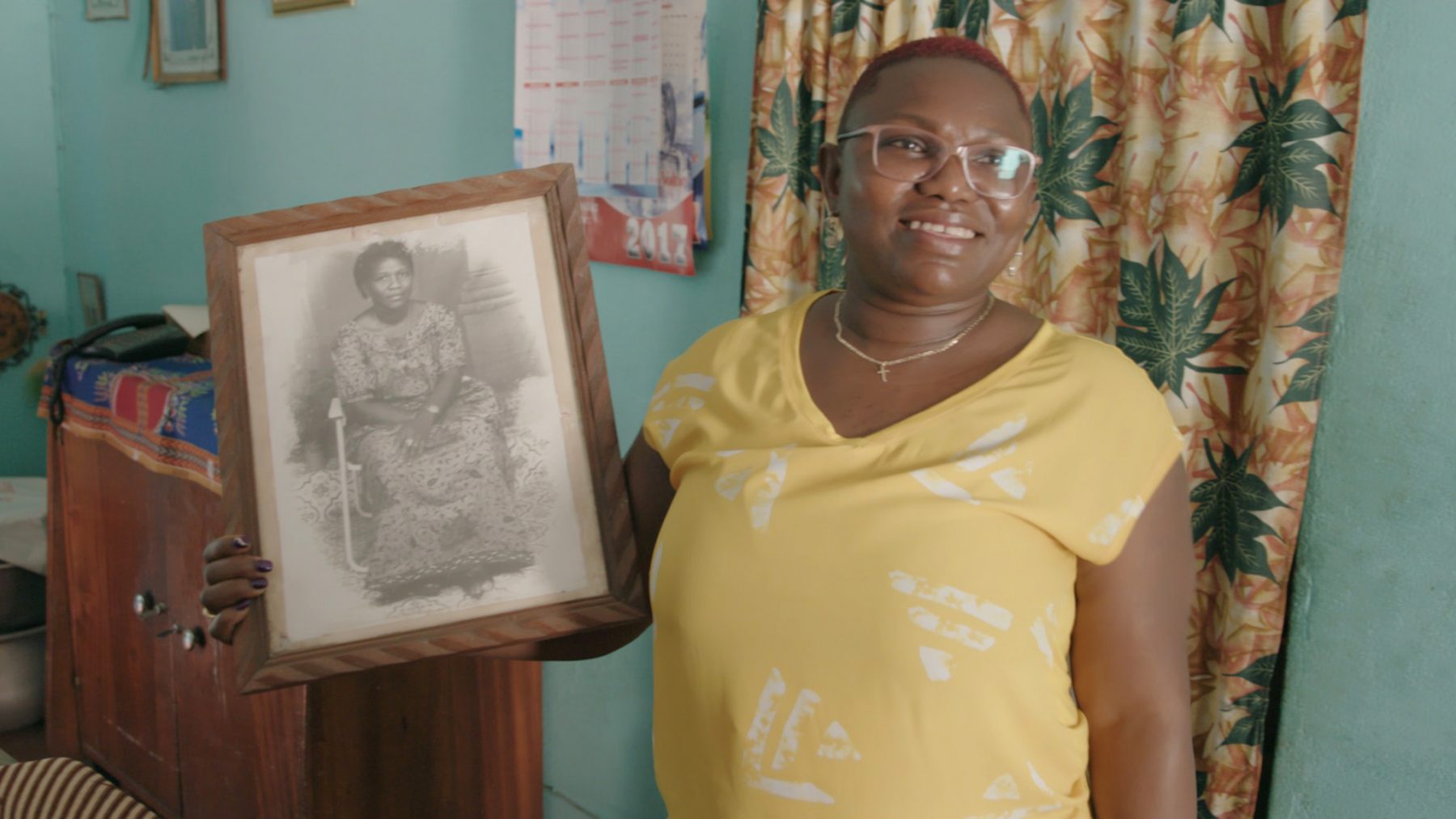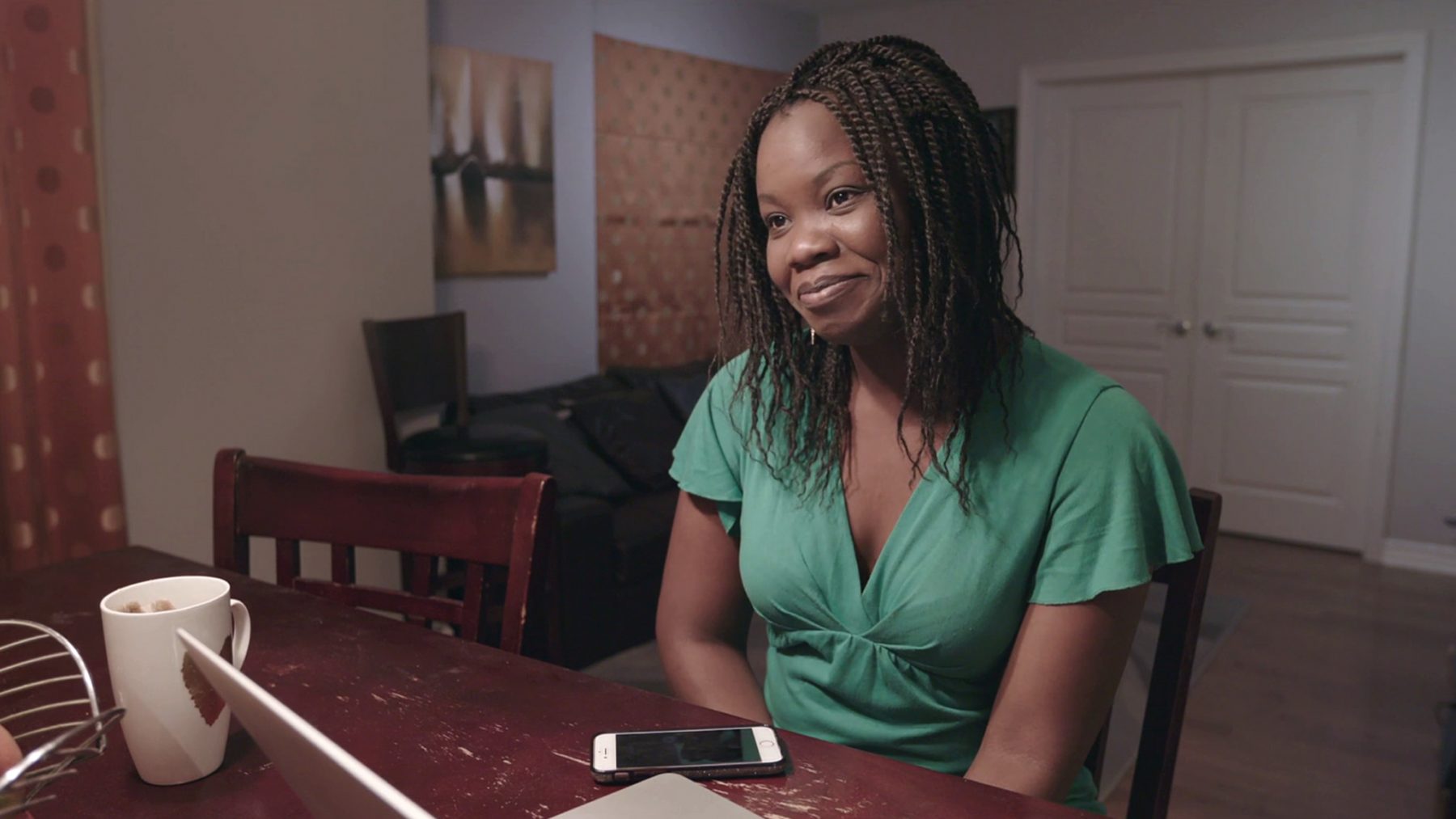
Into the Light: The Healing Power of Speaking Out
Into the Light: The Healing Power of Speaking Out
The third documentary by Canadian filmmaker Gentille M. Assih, who was born and raised in Togo, was inspired by the courage of three women in her social circle: Christiane, Aïssata and Chouchou, all of whom were immigrants who’d experienced intimate partner violence.
Their desire to speak out and take control of their lives again is at the heart of Assih’s Into the Light, a moving film that takes a sensitive and nuanced look at their journeys. The conversation that ultimately emerges goes beyond accusations and revenge. It’s about healing.
NFB: What compelled you to make a documentary on domestic violence?
GMA: The subject of my film was right in front of my eyes. I had the sense that there were women close to me living in difficult circumstances, but we didn’t talk about it. When we did start talking about it, doors that had always been closed began to open.
The subject of domestic violence didn’t really emerge until the moment when we started working on the documentary. I had to accept that in addition to telling the stories of these strong women, my film would be dealing with stories about suffering in silence. It was their determination to fight for the sake of their children, and to speak out in order to help others, that inspired me.
What about immigration? Was it a subject you intended to take on in your work?
No. In fact, quite the opposite! I came to Canada in 2009, and the experience of immigration was a difficult one, because I didn’t immigrate by choice. Rather, I followed my spouse at the time. And when he left, I felt a bit stuck. The subject I was most resistant to making a film about was immigration. I told myself, ‘Just because I’m a woman, I’m Black and I’m an immigrant doesn’t mean these themes should automatically appeal to me.’ I was determined to make films about other things.
So what changed?
Well, I had to stop being in denial! [Laughs] Seriously though, I’d had enough of hearing about how African women are submissive, that they suffer in their marriages, that it’s ‘cultural.’ I absolutely did not want to be a part of that rhetoric and feed into those clichés. In the beginning I told myself, ‘The women around me are strong, independent, educated, and they work. They are not victims.’ But in seeing what was going on around me, the subject of Into the Light became something I couldn’t avoid. These women wanted so badly to respond—to express themselves.
I had to revisit my decision and recognize the reality right in front of my eyes. I was in denial too, just like people who are victims of intimate partner violence are also, in a way, in denial—of the fact that immigration makes dealing with domestic violence harder, that strong women can also be living in this situation, and about the scope of domestic violence in Canada as a whole, and not just among immigrants.
But according to the Institut national de santé publique du Québec [link in French], immigration is an “aggravating factor” and creates a “context of vulnerability.” What do you think of these statements?
In doing extensive research on domestic violence, I understood that it’s not simply a question of immigration or culture. The nuances lie in the ways in which it manifests—the context. Of course, immigration does not bring about domestic violence, but it can complicate it. Thinking about this took me back to the notion in West African culture that a woman has to be strong in every situation: she’s the pillar of the household, she’s the bedrock of the family, and the family’s strength rests on her own. When a couple immigrates here and the family is faced with the challenges of integration, the burden is even heavier.
She has to be solid enough to support her partner if he has difficulty accepting the changes in his life. She neglects her own needs, tries to be strong for him, and finds excuses to justify his actions. Out of compassion. She is trying to understand. Except that the cycle of violence becomes worse. The whole situation is unhealthy. All the frustrations he experiences outside the home—the woman experiences them as punishment. She becomes extremely resilient. In this sense, immigration aggravates the problem.
And the context of the pandemic certainly hasn’t helped. The subject of domestic violence has been very much in the media this year, not only because of lockdowns, but also with the wave of accusations that #MeToo brought. But the point of your documentary is not to accuse. What’s the role of speaking out in the film?
It’s to heal and educate. The film draws attention to women who’ve chosen to speak for themselves, when others have always spoken for them. Speaking out is a way of sharing the suffering they’ve lived through. And we quickly understand that this has a therapeutic value.
To name something, no matter how difficult, creates the possibility of accepting what’s happened and beginning the search for solutions. When we started working together, these women were at a point where they knew they’d reached their limit. But they didn’t know yet what they would have to do to get out of their circumstances.
Was it hard to convince them to participate in the film? Because what they share is very intimate.
They wanted to do it! The unwritten agreement between us was this: You’re the one who decides what you want to talk about, and when, how, and where you want to talk about it. I’m there to capture what you share.
Of course, I tried to guide them the best I could on how we make a film, but throughout the process, beginning with the research—when I’d go and spend time with them without filming—and up until we started shooting, they were always the ones who made the decisions. It’s great to speak out, but the goal is not just to tell your story. It’s also to retake control of your own life. Our way of making the film was part of that.
As a filmmaker, was it hard for you to know how to position yourself and respond to these revelations from people close to you?
At first, I tried to keep my distance as much as possible and not allow myself to internalize their stories, which are not my own. I devoted a lot of time and energy to fighting against what at the end of the day was just a human response: emotion, compassion, and, sometimes, rage.
As a filmmaker, it would be all well and good for me to try and stay objective, but they touched the woman in me, who couldn’t stand the idea that other women would be subjected to this. They allowed me to realize things about myself and helped me heal my own internalized wounds. So by speaking out, they also helped me heal a bit too. They aren’t the only ones healing, but us as well, as we listen to what they have to say. And we thought that this might help others find the strength to stand up and heal too.
Who would you say this film is for?
Emotionally, I think it’s for everyone. Anyone who has compassion, even if they haven’t lived through domestic violence, can experience understanding and not remain indifferent. I quickly realized that my film was not just a story about women, but a story about human beings.
That allowed me to develop more nuance in my view of things, and to not make a film that just points the finger at men as abusers. In making the film, we also had to consider the children and their future. All these women are mothers. Their speaking out had to be done in such a way that their children, as they grew up, would never feel affected by the hatred captured in a film.
Even though it’s such a difficult subject, the film is also a beacon: Into the Light is about friendship, solidarity between women, and support.
I wanted to share this story of friendship. Before coming to Canada, I was raised by a mother who always taught us to avoid female friendships because they just lead to bad-mouthing, spite, or petty meanness. But if you immigrate with this frame of mind, especially in my case as the first in a family, you quickly become isolated. If women distrust each other, it feeds into that kind of taboo of silence we each maintain.
We work hard to keep up appearances, to show that all is well at home. This is how domestic violence becomes deeply rooted in a household without anyone noticing. It only took two friends, Christiane and Aïssata, opening up a bit to realize that friendship should be based on support, understanding, and non-judgment. In the film, they support each other, understand each other, and say the right things to provide each other with encouragement. They try to find the best ways to move forward together. During the editing of the film, I wanted to make sure that we felt the magical effects of the bonds of this friendship that I’d seen growing in front of the camera.
In watching the film, we get the sense that this friendship is more helpful than the resources available to them.
Yes! Not to generalize, but some of the people who provide support or mediation have studied intimate partner violence in school but may not be equipped to understand the immigrant’s experience. Christiane and Aïssata sought help, but their experiences were not positive. When I contacted Aïssata to talk to her about Christiane and our project, she was at her wit’s end. I was happy that I was able to put them in touch with each other, to help them feel less isolated. Friendship between women managed to do what other resources couldn’t: it allowed them to talk to each other and zero in on the real problem.
Then the film became a tool that could be used, for example, by shelters, schools, and other organizations. That’s why we made the film: so that this suffering would ultimately be of some benefit. And the healing process is not over. The women are still making progress. Their participation in the film has motivated them to carry on, to continue sharing their voices.
Did the members of your team immediately understand your approach and the various issues in the film, or did you have to clarify at times in order to move the process along?
There were major challenges at the start. Of course, I come from a different cultural milieu—I’m referring here to my work on productions in Europe. For example, I worked with a French DOP who didn’t know anything about the actual communication conventions of the culture he was filming. And when you don’t understand the culture, you rely on what you learned in school, classical approaches. My approach is that though of course I went to film school, I refuse to base my approach to telling a story on established tropes.
These tropes were developed to suit cultures that are very well known and very different from mine. My culture is less well known, so I have to find my own ways of telling these stories, and sharing the experiences of these people naturally and with integrity. I was fortunate enough to work with a director of photography and an editor [Steve Patry and Mathieu Bouchard-Malo] who were very open, and who understood what I wanted to do. They quickly adapted their working methods, because in this film a lot is expressed through gestures and facial expressions. It made me realize that the only universal thing is emotion.
Emotions are a language that everyone in the world understands.
Watch Into the Light:
Into the Light, Gentille M. Assih, provided by the National Film Board of Canada






